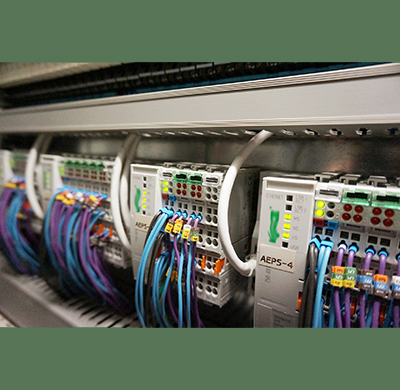Three Common Issues with PLC’s
Over the past 14 years, we at Rom-Control have literally repaired hundreds of Programmable Logic Controllers (PLC’s). Some were ‘cooked’ in electrical cabinets due to excessive heat conditions, others shorted by thousands of volts due to transients or power touching earth, and many had mechanical damage from exploding components. Usually though, the PLC arrives here without any visual sign of an issue and almost no description of what the fault is. As we have seen nearly every make and model of PLC, originally installed in various situations and environments, we now have a rich knowledge base of common faults. From reviewing our database, we thought it might be helpful to list the three most common issues we see with PLC’s.
Firstly though, it is worth mentioning a common question we get asked alot: “Why is the microprocessor controlling my equipment breaking down so often?”
Difference between PLC and Microprocessors
Before PLC’s, machinery manufacturers would install small microprocessor-based controllers to operate and monitor machinery. Programming was often created in machine code or the more advanced microprocessors used Basic or C.
Technology advancements and harsh industry conditions drove the advancement of the microprocessors towards a product that had to be robust, reliable and easier to use on the shop floor. That is when in 1968, Dick Morley invented the PLC. Very simply, he took a microprocessor and added power protection circuitry, and housed it all in a tough case. He then developed a separate interface module that all relays and sensors would connect to, and a standardized addressing system to enable the PLC to address each port in the interface module. There were many other modifications and changes after the first PLC’s were sold, especially towards the development of the ladder logic programming language (more closely aligned with the way electricians use relays and sensors), and expansion to enable added interface ports without having to re-code the PLC.
Common Fault No. 1
A PLC knows about the machine it is controlling based on sensors that are strategically placed to make a specific measurement. The sensors might measure ambient temperature, oil temperature, motor speed, blockages, and a multitude of other parameters. The PLC can then make decisions based on the sensor data to meet the operators’ needs and avoid machine breakdowns. The PLC can then control the machine via motor speeds controllers, heaters, greasing systems, etc. The sensors and controllers/actuators are connected to the PLC through Interface cards.
The PLC also incorporates a power supply that is designed to protect against overvoltage and transients. Usually, a PLC has a well-designed power supply that can handle industrial conditions but should it fail, the damage will most likely be caused in the intricate electronics of the power supply well before there is any damage to the PLC itself.
If symptoms of a fault are noticed, it is wise to check the power supply first, then the interface cards, and finally the sensors and controllers. Pay particular attention to the associated wiring ensuring terminations are solid and the wire is not damaged. If the fault is an Intermittent type, then you can usually assume the fault is not the PLC itself and to start looking around the machine.
Common Fault No. 2
If you have checked around the PLC and determined all the sensors, controllers, wiring, interface cards, and power supply are working correctly, the next thing to look for is Electro-Magnetic Interference (EMI) or Radio Interference (RI). These can affect the performance and longevity of your PLC and associated systems causing erratic behaviour. Things to look for are large electric motors near the PLC, large relays or simply signs of transient damage due to electrical shorts in the nearby area. Ensure large antennas are not placed near the PLC and handheld devices should be prohibited. Efforts should be made to improve equipment shielding, grounding, and power conditioning, all of which should minimize most EMI and RFI issues.
Common Fault No. 3
Age. All electronics deteriorate over time. The effect from the span of time is dependent on many things including the date of equipment manufacture, environment (extreme heat or cold), dust, vibration, etc. Within the PLC, discrete components such as capacitors are usually the most vulnerable, especially as they generally have a lifespan of only ten years. As a matter of policy, all PLCs refurbished by Rom-Control include every capacitor to be replaced.

